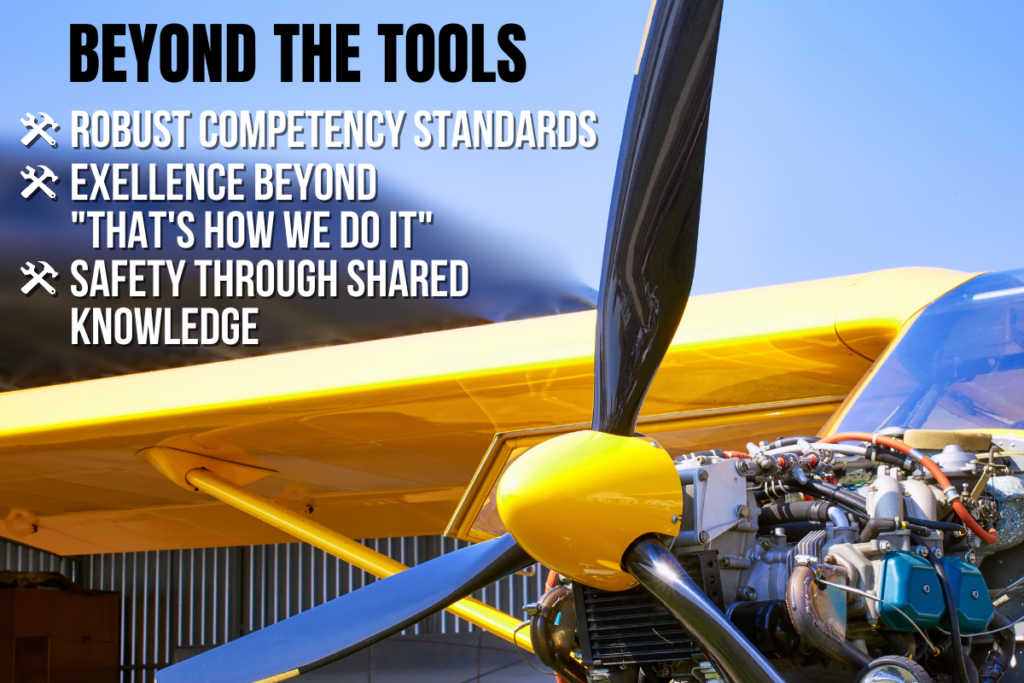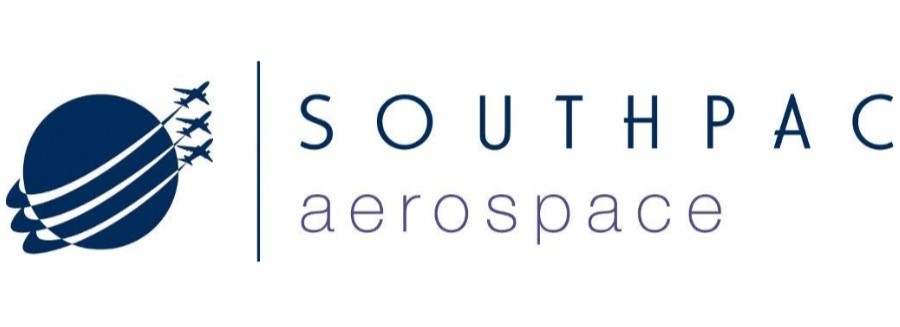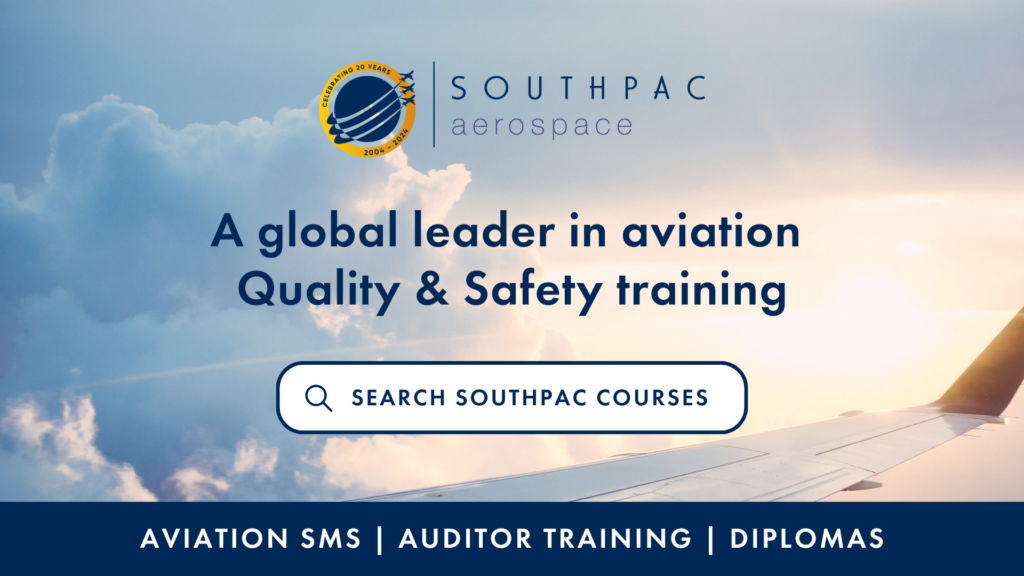Welcome to Week 4 of National Safety Month 2024
Proudly Sponsored by:
Southpac Aerospace specialises in supporting aviation operators through targeted training and consulting services designed to enhance safety, compliance, and operational performance. Offering courses including lead auditor training, safety management systems, leadership, and human factors programs, we help operators build a culture of safety and continuous improvement crucial for regional aviation environments. With flexible delivery options, including in-person, virtual and online self-paced learning, our training is accessible to aviation professionals across diverse locations.
With over 20 years as an aviation training organisation, Southpac Aerospace’s courses are aligned with global standards while addressing local challenges. Our expert facilitators bring industry insights and practical skills that can be applied directly in any aviation context, supporting operators with effective and valuable training that is industry-specific.
In addition to aviation training, Southpac Aerospace offers a suite of audit, assurance and consulting services, supporting regional aviation operators to elevate their safety practices, improve operational efficiency, and meet regulatory requirements within their unique operational landscape.
To learn more about our services or find an upcoming course, visit www.southpac.biz
The human touch in aircraft maintenance
Aircraft maintenance is a critical component of aviation safety, relying heavily on the expertise and dedication of maintenance professionals. While their work often goes unnoticed by pilots, it forms the foundation of safe flights. The human nature of this work introduces unique challenges and opportunities. Understanding the human factors that influence maintenance can provide valuable insights into the overall safety of flying.
The complexities of aircraft maintenance go beyond technical knowledge and mechanical prowess. Human factors, particularly a set known as the “Dirty Dozen,” play a significant role in the quality and safety of maintenance work.
Let’s explore how these factors interact in the hangar environment, shaping the outcomes of every task performed on an aircraft:

Lack of Communication
Think of a misinterpreted logbook entry leading to overlooked issues during the next inspection.
Complacency
A seasoned mechanic might skip steps in a familiar procedure, assuming everything’s fine.
Lack of Knowledge
When facing unfamiliar systems, a maintainer might hesitate to seek help, potentially leaving issues unresolved.
Distraction
In a busy hangar, a critical step might be missed when interrupted by an urgent question about another aircraft.
Lack of Teamwork
Two maintainers working on opposite sides of an engine might not coordinate, leading to inconsistencies.
Fatigue
Long shifts or tight deadlines can cloud judgment and affect performance.
Lack of Resources
Limited tools or parts can force compromises that impact maintenance quality.
Pressure
A maintainer might feel rushed to sign off on work, knowing pilots are waiting to fly.
Lack of Assertiveness
A junior technician might not speak up about a potential issue they’ve noticed.
Stress
Personal or professional concerns can impact decision-making, causing oversights.
Lack of Awareness
Using outdated manuals could mean missing crucial updates to maintenance protocols.
Norms
The “we’ve always done it this way” mentality might prevent adopting safer, more efficient methods.
Despite these challenges, the human element remains crucial in aircraft maintenance. Critical thinking, problem anticipation, and innovative solutions are key strengths that maintainers bring to their work. Experience-honed intuition often detects subtle issues that automated systems might overlook.
To maximise these strengths while minimising risks, maintainers employ various tools and practices. Checklists and standardised procedures ensure consistency, especially in complex tasks. Peer reviews of critical work serve as an additional safeguard against oversights.
The work environment plays a significant role in maintenance quality. A well-organised, properly lit hangar contributes to safety by reducing the risk of errors. Appropriate tools and equipment are essential for efficient and accurate maintenance.
Ongoing education is vital in the rapidly evolving field of aviation. Staying current with new technologies and safety practices helps maintainers address emerging challenges effectively.
Open communication is perhaps the most critical factor in maintaining safety standards. A culture that encourages reporting of errors or near-misses without fear of reprisal fosters a learning environment beneficial to all. In aviation, where small oversights can have significant consequences, this openness is invaluable.
Maintainers do more than just work on aircraft; they uphold the trust placed in them by pilots.
Their expertise, guided by knowledge and reinforced by diligence, ensures flight integrity. By recognising and addressing human factors, they convert potential weaknesses into opportunities for safety enhancement.
As technology progresses, the role of maintainer evolves accordingly. However, the human element remains indispensable. Maintainers combine technical proficiency with an understanding of human factors, contributing to the industry’s overall safety. Each inspection, repair, and decision plays a part in ensuring flight safety.
For pilots preparing for a flight, it’s worth considering the meticulous work that goes into keeping aircraft airworthy. The synergy between human expertise and mechanical precision is what makes safe aviation possible. Maintainers’ ability to apply their skills while navigating human challenges is fundamental to aviation safety.
Looking ahead, continuous learning and awareness of human factors will be key for maintainers. Sharing insights within the maintenance community enhances the collective knowledge base, further improving safety standards.
In the evolving field of aviation, the role of maintainers continues to be crucial. Their ability to adapt to new technologies while maintaining a focus on human factors is key to the industry’s safety standards. As maintenance practices evolve, the fundamental importance of attentiveness, expertise, and commitment to safety remains constant. These qualities, combined with ongoing learning and open communication, ensure that aircraft maintenance continues to meet the high standards required in aviation.
Safety management that works

“The other positive about a good SMS is that if you take the word safety out of it, it’s a good management system. It improves the way you do business.”
– Lindsay Evans, Founder of Network Aviation.
Understanding your operations
Every flight training school is unique. While having a Safety Management System is a requirement, RAAus provides flexible guidance to help you develop an approach that works for your operation.
For the solo operator
Running a one person band? Your safety management can be pleasingly straightforward:
- A safety policy
- A journal (physical or electronic) tracking safety observations
- Simple risk profile
- Clear emergency response plan
The beauty of a small operation is that you can keep things streamlined while maintaining professional standards. Your entire system might fit on an iPad or in a well-organised folder – and if that works, that’s perfectly fine.
Working with a small team
As operations expand to include multiple instructors, your safety management naturally evolves. Consider incorporating:
- Internal reporting systems as well as OMS reporting process
- Regular safety catch-ups
- Collaborative hazard identification
- Basic risk register
- A more sophisticated emergency response plan
The key is scaling your approach as your needs change. Start simple and build as required – many schools find they already have most of what they need in their current operations.
Larger operations
Managing a bigger school? Your safety management might benefit from more structure:
- Formal documentation systems
- Regular safety committee meetings
- Standardised reporting processes
- Trend analysis
- Comprehensive risk management
Making it work in practice
Whatever your operation’s size, focus on the practical elements such as:
The Basics
- Emergency contacts ready to use
- Clear go/no-go criteria
- Simple hazard reporting
- Daily inspection procedures
Operations
- Standard operating procedures
- Local area familiarisation
- Basic maintenance tracking
- Weather decision points
Communication
- Easy ways to raise concerns
- Regular safety catch-ups
- Clear incident reporting process
- Maintenance updates
- Student feedback system
Your safety system should make your job easier, not harder. Think of it like your flight planning – use the tools that help, adapt them when needed, and make sure they serve a purpose.
Building your system
Start with what you need today:
- Review available templates and resources
- Pick what works for you
- Adapt them to your operation
- Add components as needed
- Keep it practical and usable
Safety management isn’t about paperwork – it’s about creating an environment where everyone understands their role in keeping operations safe. The best system is one that works every day, helps prevent incidents before they happen, and makes your operation run smoother.
Think of safety management as an investment in your operation’s future. Done right, it’s not just about meeting standards – it’s about building a sustainable, professional flight training school that students trust and instructors want to work for.
Good safety management is like a well-maintained aircraft – it keeps you flying safely, efficiently, and profitably. Keep it practical, keep it relevant, and make it work for you. Support and resources are available through RAAus to help guide you, but ultimately, the most effective system is one that fits your operation and works for you every day.
Simple SMS Solutions for your FTS
This valuable video demonstrates how small operators can effectively implement SMS without complex automation. While based on FAA processes rather than CASA/RAAus requirements, it highlights how many essential safety practices are likely already part of your daily operations. The presentation offers a straightforward look at implementing SMS principles through practical, manageable steps.
PARTICIPATE TO WIN!
Complete the short quiz to enter our Week 4 prize draw!
YOU COULD WIN THE FOLLOWING PRIZE*
FIRST PRIZE: AVIATION SMS COURSE
Sponsored by Southpac Aerospace
Valued at $2,995

*Applicants must hold a current Flying Membership or Non-Flying Membership in order to win the first prize.
*Terms and Conditions apply

